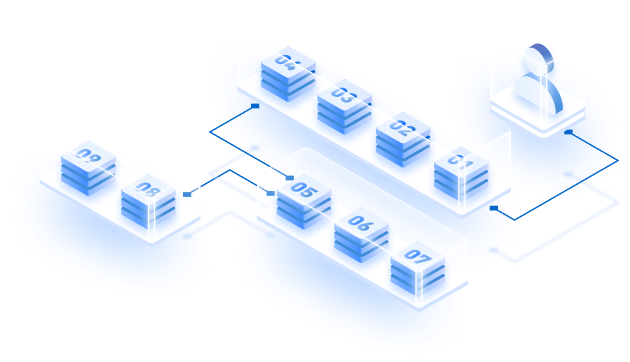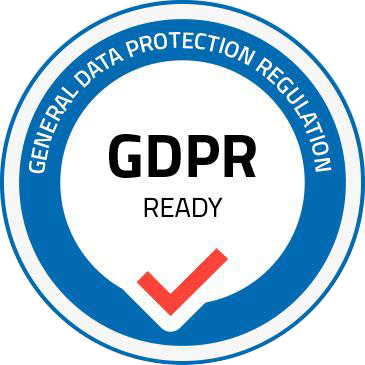The White House has taken a credible stance to anchor the United States as the beacon of innovation of the 21st century to make America Great Again. But this can only happen when cryptos can go mainstream in the Unites States and not evolve, emulate and excel some place else. For cryptos to evolve and be innovative in the United States, there are two sectors ripe for innovation: (i) On chain IDs (ii) Payments. If these two sectors are revolutionized, it would let crypto fly by from the United States to beyond.
But the process to revolutionize these two sectors is easier said than done. In this article, we shall see problems these two sectors are facing and how ZK proofs for Digital IDs and payments can make a difference here.

What are ZK Proofs and How Do They Work?
ZK proofs are a scalable method of proving the validity of anything without revealing anything other than the validity statement. Through the use of ZK proofs for payments and Digital IDs, it is possible to let new use-cases which are impossible on blockchains to make way and let adoption drive the future of Web 3 as demonstrated through this image shared below.
If you want to learn more about how they work and other details, you can read What are zero knowledge proofs and why are they important for blockchain here.
Problems In Identity Management and Payments They Can Solve For Traditional Systems
In Identity Management
What are the problems in identity management that traditional systems cannot solve as of now :
1.High Cost
Identity management while using the old methods are quite costly for any economy. . For example, in the United States, the government has to incur the following;
- For Social Security Cards & Administration (SSA): $14.227 billion
- Passports: $5.1B
- Driver’s Licenses: $964.55 million
- Cybersecurity & Data Protection: $60.4 billion
- Enforcement & Compliance: $60.4 billion
Collectively the amount totals to $141.092 billion annually which the US government has been spending to safeguard the citizens. Now, this can be easily resolved through onchain IDs because not every department has to keep a copy of the same. But the problem with this approach is that not every government body would be interested in sharing the data with others due to multiple interoperable, security and sovereignty challenges.
Identification/ Discoverability
When you are keeping all the data at a single point, it is very easy to discover and compromise the same. For example, in the year 2024, there have been more than 228,282 government imposter scams that have happened in the United States. Due to these scams, the government almost lost $126.5 million. When the authorities investigated the matter, it was found that this is happening because data breaches have exposed many SSNs. The crazy part was that everything was coming from a single source: Equifax. Had there been a way to mask the identity of the servers or scatter the data across multiple checkpoints or owing the data in self hosted IPFS, such a thing wouldn’t have happened in the first place.
𝐂𝐀𝐒𝐄 𝐅𝐈𝐋𝐄 𝟎𝟎𝟕 — 𝐄𝐐𝐔𝐈𝐅𝐀𝐗 𝐃𝐀𝐓𝐀 𝐁𝐑𝐄𝐀𝐂𝐇
— 𝙼𝚛.𝐆𝐡𝐨𝐬𝐭 (@Abd00lmalik) August 7, 2025
In one of the most damaging breaches of the digital era, Equifax exposed the personal data of 148 million Americans including names, Social Security Numbers, birthdates, addresses and driver's license numbers.… https://t.co/dDsRGiQ6dX pic.twitter.com/J0IieGl2LM
Limited Federal-State Coordination
Federal and state relations in many economies is a real challenge when states are not ready to co-operate with the government in handling details of their citizens. For example, the Kate (Kathryn) Steinle case is a prime example to put here. In the year 2015 in San Francisco, Kate (Kathryn) Steinle was shot dead by a detainer named José Inez García Zárate . This primarily happened because of lag in data sharing where one of the departments recorded his details as 45 years and another data showed he was in jail with the ID carrying his age to be 52 years.
Due to these discrepancies, he was allowed to walk free. A proper synchronization between state and federal would have averted this but due to autonomy, no state wants to let the federal government take control because it would lead to an attack on federalism and compromising the sovereignty of the state.
The Real ID Nightmare: Federal Control Over Identity and States' Rights
— The Matrix is Glitching (@TMisGlitching) August 8, 2025
Approximately 110 million Americans have opted out of the Real ID, resisting a federal program criticized for undermining states' rights. Critics argue it centralizes control over personal identification,… pic.twitter.com/7xzlIUMnc4
In Payments
Like the on-chain IDs sector, the payment sectors are also not free from roadblock while using the existing systems in the form of ;
Overcoming the Problems in Illicit/ Terror Financing
At present, if the policy makers and the market regulators want to monitor the illicit activities happening due to the use of dollars, it is very hard to track the same when they are using dollars in cash form or the transactions are happening outside the jurisdiction of the United States. Blockchain can have a crucial role to play here because they are not confined by a specific jurisdiction, but due to their over-transparent nature, the authorities find it hard to integrate blockchains in their payment systems to completely resolve this problem.
JUST IN: 🇺🇸 Treasury Secretary Scott Bessent says the US government is looking at "regulatory impediments to blockchain, stablecoins, and new payment systems." pic.twitter.com/dhktHc267y
— Watcher.Guru (@WatcherGuru) April 9, 2025
Inefficiency In Tacking State-level Money Transmitter Laws
In the US, there are many states which are allowing banks and other financial institutions to service digital assets for undertaking payments and other details. For that matter, the regulators are setting up many state financial services agencies to keep an eye on irregularities or any other unlawful activities that these banking institutions are conducting while servicing digital assets. And in the process, these institutions have to procure the license for the same.
But in some states, the laws might not be there to keep an eye on such activities. And if new laws are proposed and passed to tackle inefficiencies, they might take months and excessive investment to enforce and integrate with the existing system for such banks and financial institutions. For example, when the New York State Department of Financial Services created a law for the same, it led to uncertainty for those applying for the licensing because the process was very complex, extensive and costly when mixing traditional systems with on-chain monitoring and management.
Inability To Make Real Assets Highly Liquid For Payments
At the moment, the traditional financial systems are not aligned to bring many assets onchain like gold, bonds and other for near instant gratification. This is happening because there’s no way out where traditional systems can overcome their old bottlenecks in making multiple asset kinds more liquid without diluting compliance in the process to meet loopholes in their treasury.
The need of a traditional system is to ensure that tokenization can turn compliant, verifiable and secure which can drive in a lot of liquidity but the process would demand interoperable collateral pools, instantaneous atomic settlements, unified market and programmable transactions. Now, if this has to happen, the traditional systems must be designed in such a manner where it is futuristic and compliant at the same time.
Unfortunately for Americans, there’s not enough US treasuries, so the government has to increase deficit spending to keep the global monetary system from imploding. It’s a modern day Triffin’s Dilemma
— George Gammon (@GeorgeGammon) September 28, 2024
Treasuries = Collateral
There’s so much demand for treasuries there’s a… pic.twitter.com/gkzoYw2iAc
How is ZKsync Planning To Resolve the Same?
ZKsync has made a giant leap in resolving the same through the use of blockchain technology. So far, government authorities refrained from using blockchain technology due to its fundamental flaws where everything is public and open to all. But ZKsync Elastic Chains have ended as an amenable solution and the latest products of ZKsync Quark IDs and Prividum are solving some of the innate problems in ID management and payments to emerge as a gold standard. Have a look at the solutions they have provided to help some of the emerging use-cases to receive mainstream adoption.
Quark IDs
QuarkIDs are solving the innate problem of interoperability, data silos and standardization because right at this moment, there’s no means to standardize ID verification cross chain across different blockchain protocols. Due to this, though we may say that ideally one should evolve from the Web 2→ Web 3 world, the problem of fragmentation, and data silos remain the same with the Web 3 world.
With the Quark IDs, this problem is getting resolved from the grounds up due to the use of ZK proofs which can standardize the verification system for quicker adaptability. The efficiency of delivering on-demand, market ready solutions for standardizing On chain ID has been such by Quarks that Buenos Aires has already integrated this in their system making 3.6 million IDs move on chain with interoperability and cross-border operations without government intervention.
Crypto is a global movement to shift ownership from authorities to individuals.
— ZKsync (@zksync) February 13, 2024
We’re working with the city of Buenos Aires and @Extrimian to build @Quark_ID, an open source protocol, to issue decentralized identifiers (#DIDs) for millions of Argentinian citizens to reclaim… pic.twitter.com/co6nuIOVXu
Prividum
Prividum is another solution proposed by ZKsync to take payments to the next level of adoption because right now there’s a lot of challenge when you are going for payments onchain like compliance, access controls using blockchains, quickly bringing RWAs onchain . But with the help of the ZKsync Prividum, which is using ZK-proofs for payments and settlements, all these problems are getting resolved. Moreover, Prividum also provides some of the advanced features like:
- Access Control: Allowing regulators to view, analyze and even censor every payment happening on-chain despite using blockchains.
- Private RPC: ensuring that while pushing for compliance, you do not end up making everything public through Private RPC points assigned to only authorized entities for access
- Private Blockchain Explorer: Not allowing anyone to see any data like payments and settlements coming to and from different accounts
- Ethereum Security: Ethereum is the gold standard in security and when enterprises or banks are trusting a payment system to either upgrade or replace their legacy system, they want assurance that it would be battle tested. ZK proofs for payments allow all Priviodium transactions to be settled on Ethereum using ZK-Tech. This allows any application hosted on top of the Prividum chain for payments to inherit almost Ethereum equivalent security.
These trade offs are such that governments and institutions can also now use blockchains without drawbacks. At the moment, Deutsche Bank has already used ZKsync Prividium to deploy project DAMA in association with the Memeto Blockchain and Zeeve playing a pivotal role in setting up the infrastructure for the project. The Trump administration wants to scrap the Biden Administration Operation ChokePoint to make the US the crypto hub of the world. In this pursuit, they have acknowledged the efficacy of ZK-Proofs in making the difference.
The @WhiteHouse report names ZK Proofs as critical infrastructure for digital ID and payments.
— ZKsync (@zksync) July 31, 2025
ZKsync has pioneered the field—from QuarkID, world's first ZK identity used by a government, to Prividium, the only institutional blockchain platform with privacy & interoperability.… pic.twitter.com/qHnahjMvgc
With ZKsync being the front runner in this ZK Proofs so far and their battle tested market presence, if you want to build something around on-chain IDs and revolutionizing payments, this could be a stack due to its Elastic Chain(s)interface where you do not just get one ZK ecosystem but access to all the ecosystem using ZK proofs as the tech to interoperate, share liquidity and function. Zeeve has helped many projects in integrating ZK-Tech with Dama for the Memento blockchain being the latest. You can read the use-case here to understand Zeeve’s contribution in this transformation. If you want to undertake digital transformation, Zeeve can help you.

Build Your ZKsync Chain for On-Chain ID or Payments Network with Zeeve
Zeeve has a battle tested track record of deploying your own purpose built ZKSync chain using ZK proofs for payments and digital IDs. So far, Zeeve has been instrumental in helping some of the big names like Memento, Syscoin’s zkSYS, and many others to launch their ZK chains using the ZK Proofs as an underlying validation technology. If you want to build your own application to support on-chain ID management or streamline payments systems, Zeeve, by harnessing more than 40+ integration partners can help you in this pursuit. To take this forward and launch your ZKsync using ZK-Proofs for payments and digital IDs., our experts are just a click away to help you in all possible ways.




